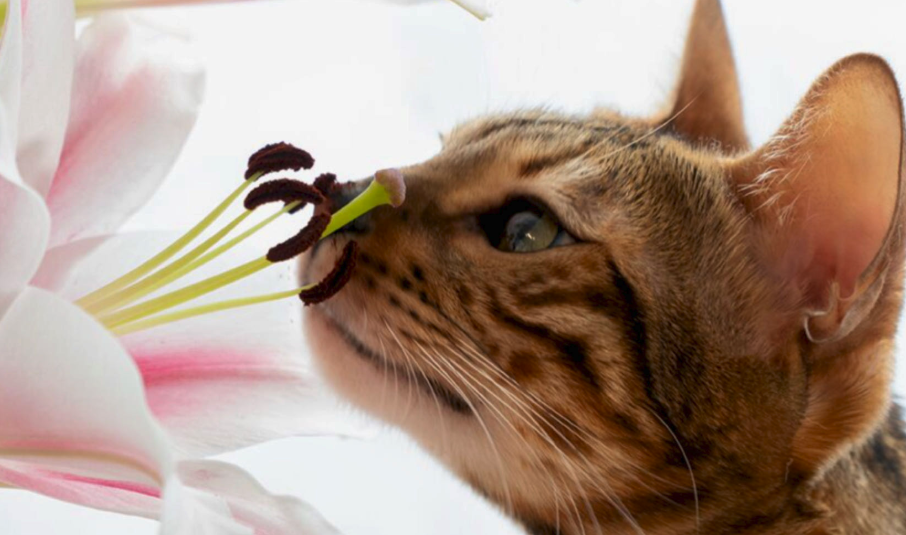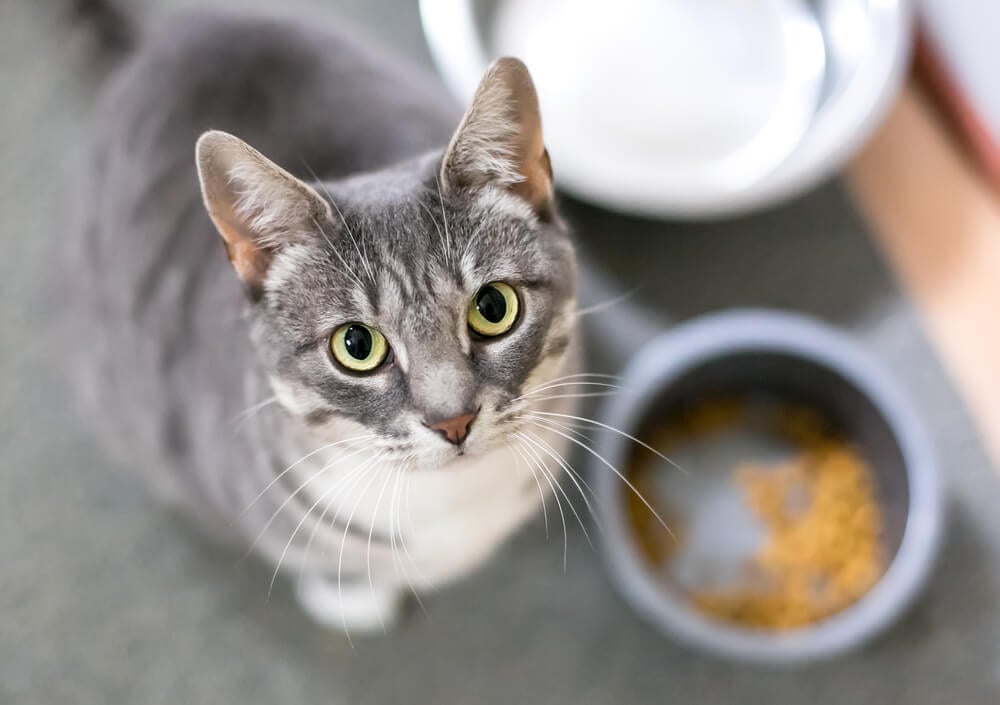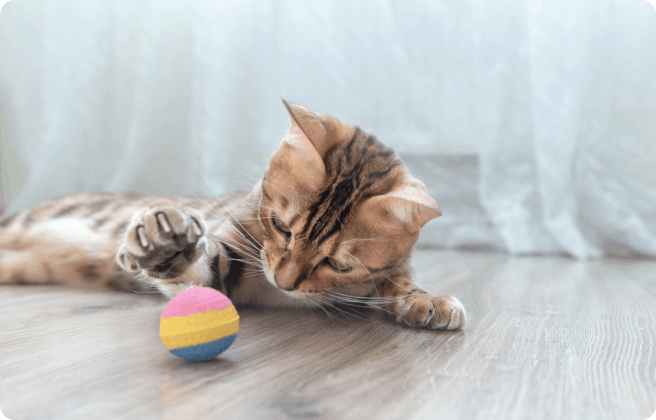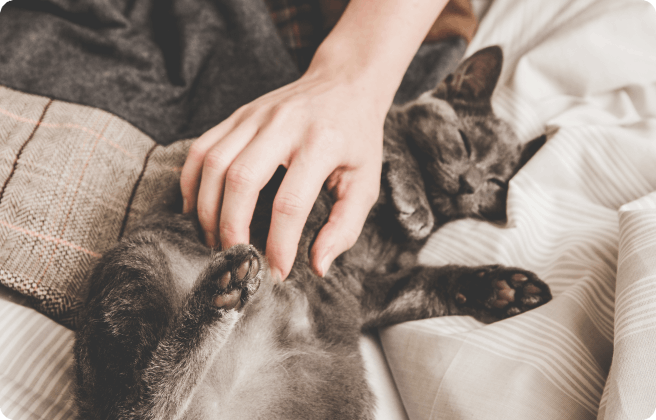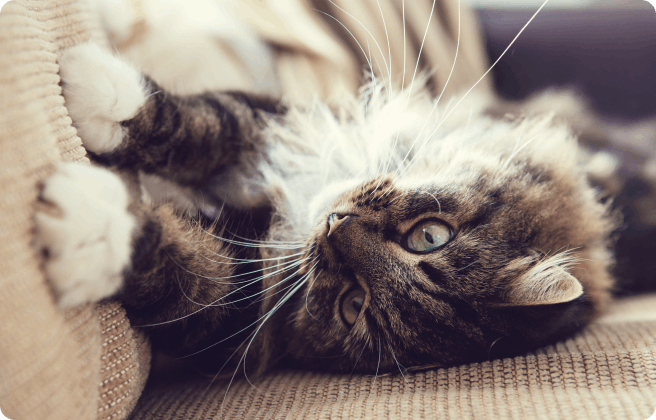
It’s very common for cats to leave scratch marks in their environments, but unfortunately for domesticated cat parents, this also means ruined furniture, carpets and even door frames.
There are multiple reasons for this behavior but the bottom line is that cats scratch furniture because they have a natural instinct to scratch. Cats need to scratch to trim their claws, leave a scent and stretch their muscles. Your furniture just happens to be in the way.
But let’s explore the reasons further.
Why do cats scratch?
- Maintaining their claws
- Marking their territory
- Expressing excitement or stress
- Stretching
Maintaining their claws
Cat claws are made from keratin and continue to grow throughout a cat’s life. As the claws grow, the older keratin and outer layer can die. By scratching their claws downwards, also known as stropping, cats can loosen and remove this outer layer to keep their claws sharp. While outside, cats will use trees, fences, and sheds to do this, but inside the house, cats will scratch any surface to get the job done — including your furniture. Some cats may also feel more comfortable grooming in the safe environment of your house, rather than outside.
Marking their territory
Cats have sweat and scent glands in between the pads of their feet which produce a unique smell. As a cat scratches its claws, this scent is released. So, by scratching nearby trees and the furniture in your home, cats are physically marking while also scenting their territory.
Expressing excitement or stress
Scratching can less commonly be an expression of excitement, stress or a desire to play. It can also be used to seek attention or show territorial confidence in the presence of their owners. An easy way to spot if your cat is feeling insecure or stressed is to look at the scratch patterns. If the scratches are spread throughout your house and around doors or windows, this could be a sign that your cat is feeling anxious or insecure.
Stretching
Scratching claws can release feel-good hormones for a cat and keep muscles limber. This is because scratching exercises and stretches the feet muscles, forelimbs, and spine which is important for cats spending time outdoors climbing or jumping.
How to stop a cat scratching furniture
Although there are many reasons why cats scratch furniture, cats do not have a moral compass and will not curb their instincts to protect your armchair or carpet. Scratching is inevitable and cats will simply take their pick of where they prefer to scratch in your home. So, the best way to stop a cat from scratching furniture is to provide them with a preferred location to scratch and follow these steps:
- Provide your cat with a scratching post
- Place the scratching post in a good location
- Introduce your cat to the post
- Make your furniture less attractive
Provide your cat with a scratching post
The key to preventing ruined furniture in your home is to provide a more desirable place for your cat to scratch. Cats love tall, sturdy objects which can withstand some rigorous scratching without wobbling or falling over. Cats should be able to scratch while fully stretching themselves.
The most popular option for this is an indoor scratching tree or post. There is a huge range of scratching posts available on the market for all budgets, from a single pole to a multi-platform structure which incorporates different textures and areas to play. Most scratching posts are made of sisal rope but some cats also like wood or corrugated cardboard. You could even make a scratching post, pad or panel yourself and fix it to the wall if you’re tight for space. The tip is to try and emulate the piece of furniture or material that your cat has been scratching.
If you own more than one cat, you should provide one scratching post or area per cat in different locations.
Place the scratching post in a good location
A scratching post will only be an attractive alternative for your cat if it’s placed somewhere your cat likes to visit or scratch. For example, if your cat is scratching the dining room table, place the scratching post next to the dining room table.
Introduce your cat to the post
If your cat is unfamiliar with scratching posts and pads, they will not understand that this is the new place to scratch. Try to play with your cat around the post and involve it in games so your cat starts to interact with the post. You could also rub catnip on the post to peak your cat’s curiosity. Avoid taking your cat to the post and imitating scratching, as this could be stressful for your cat and lead to a negative association with the post.
Make your furniture less attractive
You’ve now provided your cat with everything it needs to have a good scratching session in a ‘safe’ space, but the best way to completely stop your cat from scratching furniture is to make the furniture less fun or accessible. Cover sofas, chairs, and tables with tight-fitting sheets and use double-sided sticky tape or clingfilm to make smaller, more awkward items less attractive to scratch. Your cat will not enjoy scratching things which it can’t sink its claws into. After a while, you will be able to remove these coverings as your cat will enjoy its new scratching post and no longer need to scratch the furniture.
We uphold the highest editorial standards when creating the authoritative content pet parents rely on and trust.
Every piece of clinical content on the Cat Food Advisor is reviewed by our certified Veterinary Advisory Board, which consists of licensed veterinarians and medically certified specialists.
Our reviews are completely independent; we are not paid by any pet food company to promote their products favorably. We do not accept money, gifts, samples or other incentives in exchange for special consideration. For more information see our Disclaimer & Disclosure page.




